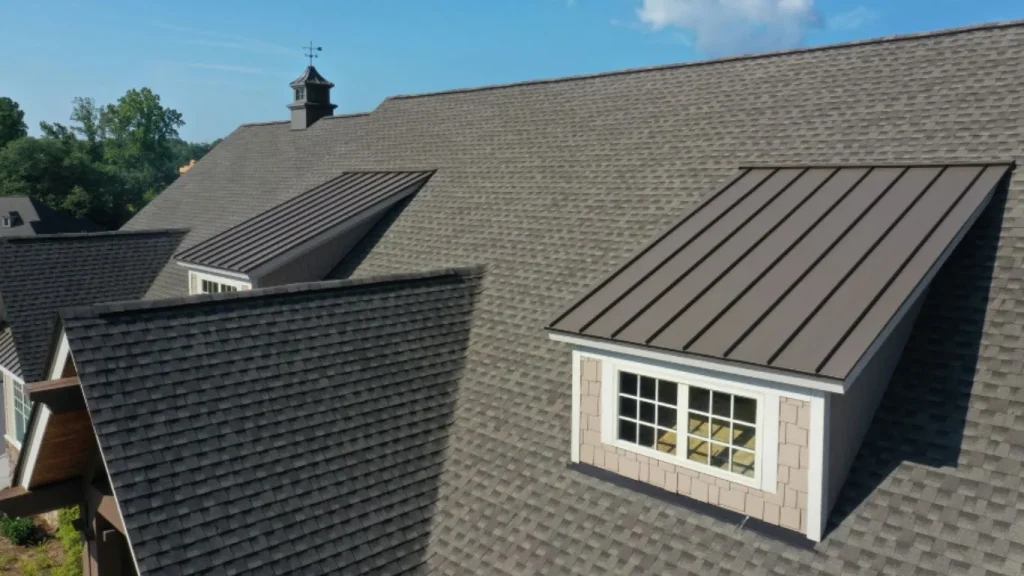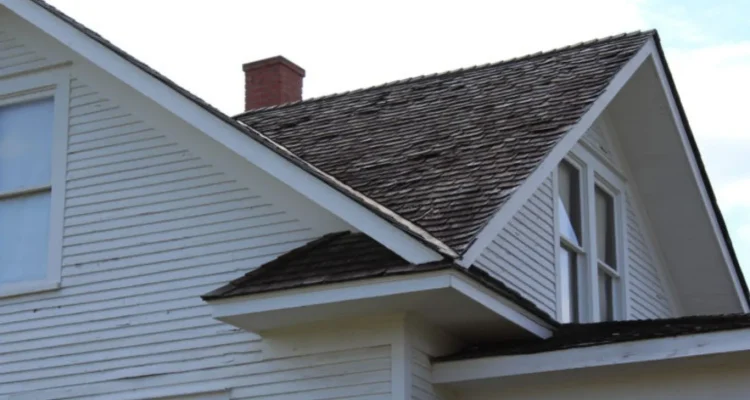Introduction
When it comes to understanding the anatomy of a roof, the term “rake” often surfaces in discussions. But what exactly is the rake of a roof? Why is it important? Let’s dive deep into the concept of a roof rake, its purpose, types, materials, and much more. By the end of this article, you’ll have a comprehensive understanding of roof rakes and their significance.

Understanding Roof Terminology
Basic Roof Structure
Before delving into the specifics of roof rakes, it’s crucial to understand the basic structure of a roof. A typical roof consists of several components: the ridge, the eaves, the fascia, the soffit, and the rake. Each part plays a vital role in the overall functionality and aesthetics of the roof.
Key Roof Parts
- Ridge: The highest point where two roof slopes meet.
- Eaves: The lower edges of the roof that overhang the building’s walls.
- Fascia: The horizontal board that runs along the edge of the roof.
- Soffit: The underside of the eaves.
- Rake: The sloped edges of a gable roof.
Defining the Rake of a Roof
What Exactly is the Rake?
The rake of a roof refers to the sloping edge of a gable roof that extends from the ridge to the eave. It’s essentially the side edge of the roof that runs from the top to the bottom of the slope. This element not only contributes to the roof’s structural integrity but also enhances its visual appeal.
Rake vs. Eave: What’s the Difference?
While both the rake and the eave are edges of the roof, they serve different purposes and are positioned differently. The eave is the horizontal edge at the bottom of the roof, providing an overhang to protect the walls from rainwater. In contrast, the rake is the angled edge along the sides of the gable roof, adding to the architectural detail and offering protection from wind-driven rain.
Types of Roof Rakes
Sloped Roof Rakes
Sloped roof rakes are commonly found on gable roofs, where the sides of the roof slope downward. These rakes are crucial for directing rainwater away from the roof and preventing damage to the structure.
Flat Roof Rakes
Although less common, flat roofs can also have rakes. In this case, the rake serves more of an aesthetic purpose, providing a finished look to the roof edges and ensuring that water flows off the roof effectively.
Functions of a Roof Rake
Aesthetic Appeal
One of the primary functions of a roof rake is to enhance the visual appeal of a building. The rake provides a clean, finished edge to the roof, contributing to the overall architectural style.
Protection from the Elements
Roof rakes also play a crucial role in protecting the roof and the building from the elements. They help to channel rainwater away from the roof, preventing water damage and protecting the structural integrity of the building.
Materials Used for Roof Rakes
Common Materials
Roof rakes can be made from various materials, including wood, metal, and vinyl. Each material offers different benefits and drawbacks.
- Wood: Traditional and aesthetically pleasing but requires regular maintenance.
- Metal: Durable and low-maintenance but can be prone to rust if not properly treated.
- Vinyl: Cost-effective and low-maintenance but may not have the same aesthetic appeal as wood or metal.
Pros and Cons of Each Material
- Wood: Pros – Natural look, customizable. Cons – Requires painting/staining, susceptible to rot.
- Metal: Pros – Long-lasting, weather-resistant. Cons – Can be expensive, potential for rust.
- Vinyl: Pros – Affordable, easy to install. Cons – Less visually appealing, can become brittle over time.
Design Considerations for Roof Rakes
Architectural Styles
When designing a roof rake, it’s essential to consider the architectural style of the building. Different styles may require different rake designs to complement the overall look of the structure.
Functional Requirements
Beyond aesthetics, the rake’s design must meet functional requirements, such as providing adequate protection from the elements and supporting the roof’s structural integrity.
Installation of Roof Rakes
DIY vs. Professional Installation
Installing a roof rake can be a DIY project for those with some experience in roofing, but professional installation is often recommended to ensure the job is done correctly and safely.
Step-by-Step Installation Guide
- Measure and Cut: Measure the length of the rake and cut the material to size.
- Prepare the Surface: Ensure the edge of the roof is clean and free of debris.
- Attach the Rake: Secure the rake to the edge of the roof using appropriate fasteners.
- Seal and Finish: Apply sealant to prevent water infiltration and finish the rake to match the roof.
Maintenance of Roof Rakes
Regular Inspections
Regular inspections are vital to ensure the roof rake remains in good condition. Look for signs of damage, such as cracks or rust, and address them promptly.
Cleaning Tips
Keeping the roof rake clean is essential for its longevity. Remove debris regularly and wash the rake with a mild detergent to prevent the buildup of dirt and grime.
Common Problems and Solutions
Common Issues
- Rotting Wood: Caused by prolonged exposure to moisture.
- Rusty Metal: Results from inadequate maintenance or exposure to harsh weather.
- Brittle Vinyl: Can occur due to aging or extreme temperatures.
How to Fix Them
- Rotting Wood: Replace the affected sections and apply a protective finish.
- Rusty Metal: Sand off rust and apply a rust-resistant primer and paint.
- Brittle Vinyl: Replace the damaged sections with new material.
Roof Rake and Snow Removal
Importance in Snowy Climates
In regions with heavy snowfall, roof rakes are essential for removing snow and preventing ice dams, which can cause significant damage to the roof.
Techniques for Effective Snow Removal
Use a roof rake tool to gently pull snow off the roof, starting from the edge and working your way up. Avoid applying too much pressure to prevent damaging the shingles.
Cost of Roof Rake Installation
Factors Affecting Cost
Several factors can affect the cost of installing a roof rake, including the material used, the complexity of the design, and labor costs.
Budgeting Tips
To budget effectively, get multiple quotes from contractors, consider the longevity and maintenance costs of different materials, and factor in any additional expenses such as sealants and paint.
Roof Rake Regulations and Codes
Building Codes
Ensure that the roof rake installation complies with local building codes, which may dictate specific requirements for materials, dimensions, and installation methods.
Local Regulations
Check with local authorities to determine any additional regulations or permits required for roof rake installation in your area.
Innovations in Roof Rake Design
Modern Materials
Advancements in materials technology have led to the development of more durable and aesthetically pleasing roof rakes, such as composite materials that mimic the look of wood without the maintenance.
Technological Advancements
Innovative designs now include integrated gutter systems and heating elements to prevent ice dams, making roof rakes more functional and efficient.
FAQs About Rake Of a Roof
What is the purpose of a roof rake?
The primary purpose of a roof rake is to provide a clean, finished edge to the roof and protect the building from the elements by channeling rainwater away from the roof.
Can I install a roof rake myself?
While DIY installation is possible, professional installation is often recommended to ensure the rake is installed correctly and safely.
How often should I maintain my roof rake?
Regular inspections and maintenance should be performed at least once a year to ensure the roof rake remains in good condition.
What materials are best for roof rakes?
Common materials include wood, metal, and vinyl, each with its own pros and cons. The best material depends on your specific needs and preferences.
Are roof rakes necessary for all types of roofs?
Roof rakes are most commonly used on gable roofs, but they can be beneficial for other roof types as well, especially in regions with heavy rainfall or snowfall.
Conclusion
Understanding the rake of a roof is essential for both aesthetic and functional reasons. Whether you’re a homeowner looking to enhance your home’s curb appeal or a builder aiming to ensure the structural integrity of your project, knowing the ins and outs of roof rakes will undoubtedly benefit you. From choosing the right materials to proper installation and maintenance, every aspect of roof rakes plays a crucial role in the longevity and appearance of your roof.


Congratulation!